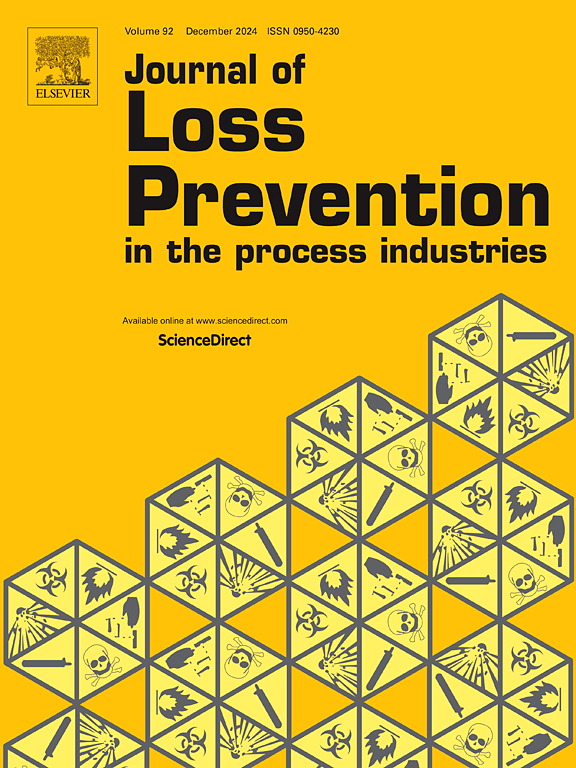Incorporating resilience into HAZOP to enhance process safety in industrial facilities
IF 4.2
3区 工程技术
Q2 ENGINEERING, CHEMICAL
Journal of Loss Prevention in The Process Industries
Pub Date : 2025-03-14
DOI:10.1016/j.jlp.2025.105630
引用次数: 0
Abstract
Despite the worldwide focus on safety and steady operations, process plants struggle with the inherent complexities of industrial conditions that can lead to unexpected problems. The continuing prevalence of accidents with different root causes underlines the critical need for more robust process safety and risk management approaches. Process plants currently depend on the traditional hazard and operability study (HAZOP) to pinpoint potential hazards. The existing approach to risk assessment often focuses on identifying potential vulnerabilities and neglects the system's ability to endure and bounce back from disruptions. Resilience focuses on a system's ability to survive the initial disruption, adapt and recover back to the normal operation. Integrating resilience into the early design phase and operation of process plants offers a solution to significantly enhance process safety. This paper proposes a novel approach to improve industrial safety by integrating resilience into HAZOP studies during the design and operation phases. The research advocates for a more robust risk assessment, emphasising the importance of resilience throughout the design and operational stages. The proposed method integrates resilience principles as an essential element throughout the entire HAZOP framework and flowchart, ensuring resilience is built into the system's design and operation.
将弹性纳入HAZOP以加强工业设施的过程安全
尽管全世界都在关注安全和稳定的运行,但加工工厂仍在与工业条件固有的复杂性作斗争,这些复杂性可能导致意想不到的问题。不同根本原因的事故持续流行,强调了对更强大的过程安全和风险管理方法的迫切需要。加工工厂目前依靠传统的危害和可操作性研究(HAZOP)来确定潜在的危害。现有的风险评估方法通常侧重于识别潜在的漏洞,而忽略了系统承受和从中断中恢复的能力。弹性关注的是系统在最初的中断中生存、适应并恢复到正常运行的能力。将弹性集成到工艺装置的早期设计阶段和运行中提供了一种显著提高工艺安全性的解决方案。本文提出了一种通过在设计和运行阶段将弹性纳入HAZOP研究来提高工业安全性的新方法。该研究提倡进行更有力的风险评估,强调在整个设计和操作阶段恢复能力的重要性。所提出的方法将弹性原则作为贯穿整个HAZOP框架和流程图的基本要素,确保弹性被构建到系统的设计和操作中。
本文章由计算机程序翻译,如有差异,请以英文原文为准。
求助全文
约1分钟内获得全文
求助全文
来源期刊
CiteScore
7.20
自引率
14.30%
发文量
226
审稿时长
52 days
期刊介绍:
The broad scope of the journal is process safety. Process safety is defined as the prevention and mitigation of process-related injuries and damage arising from process incidents involving fire, explosion and toxic release. Such undesired events occur in the process industries during the use, storage, manufacture, handling, and transportation of highly hazardous chemicals.

 求助内容:
求助内容: 应助结果提醒方式:
应助结果提醒方式:


